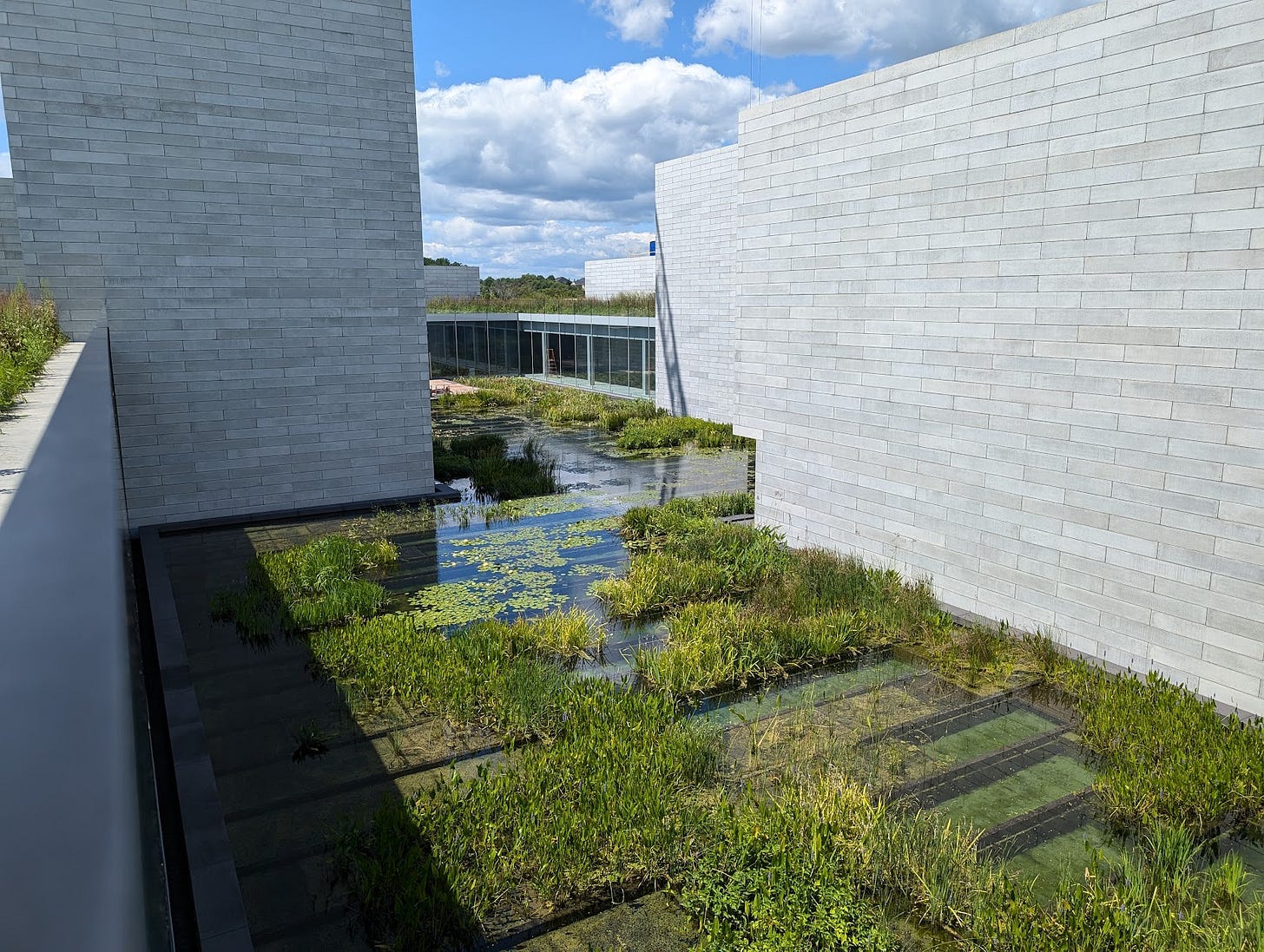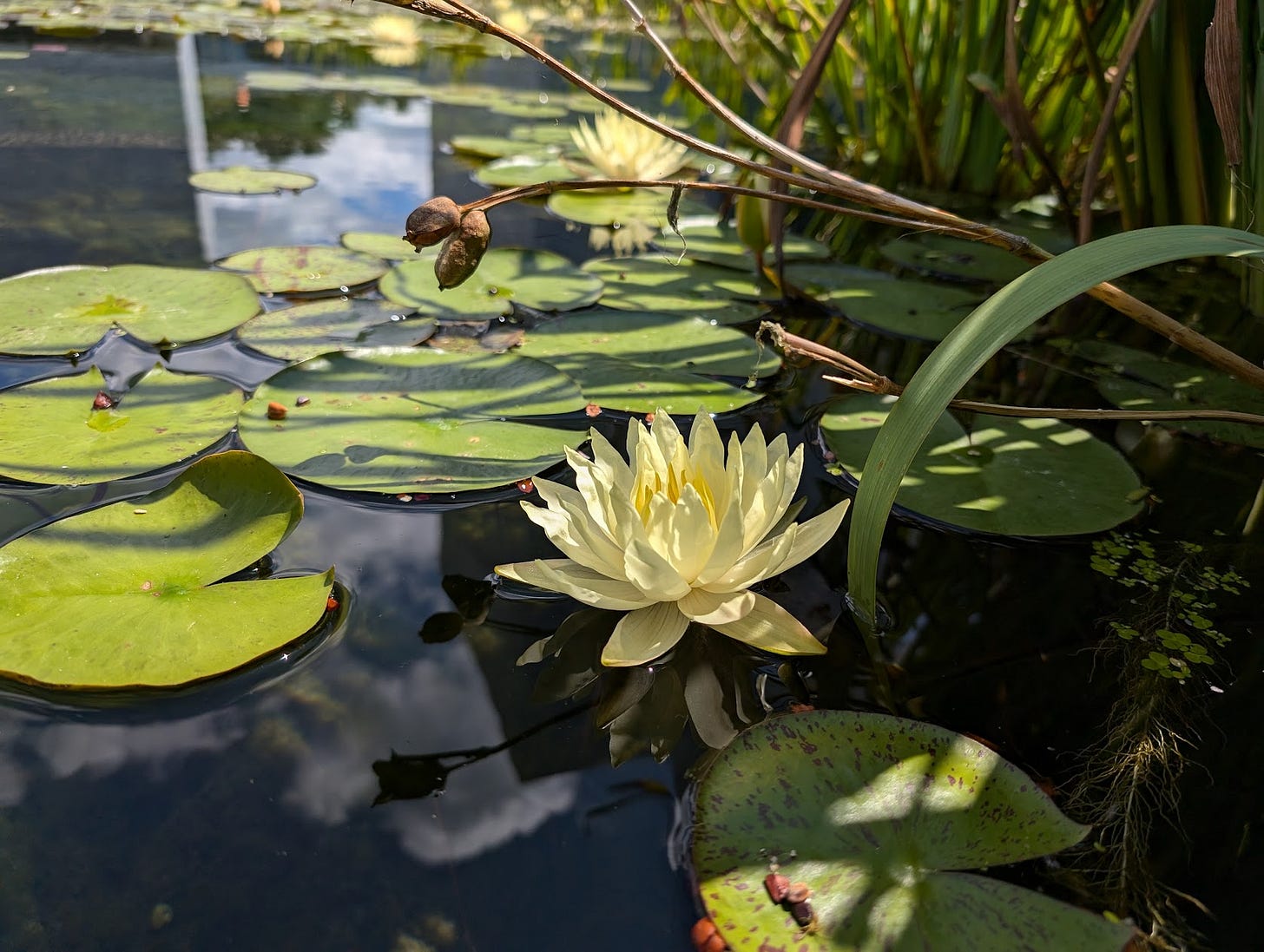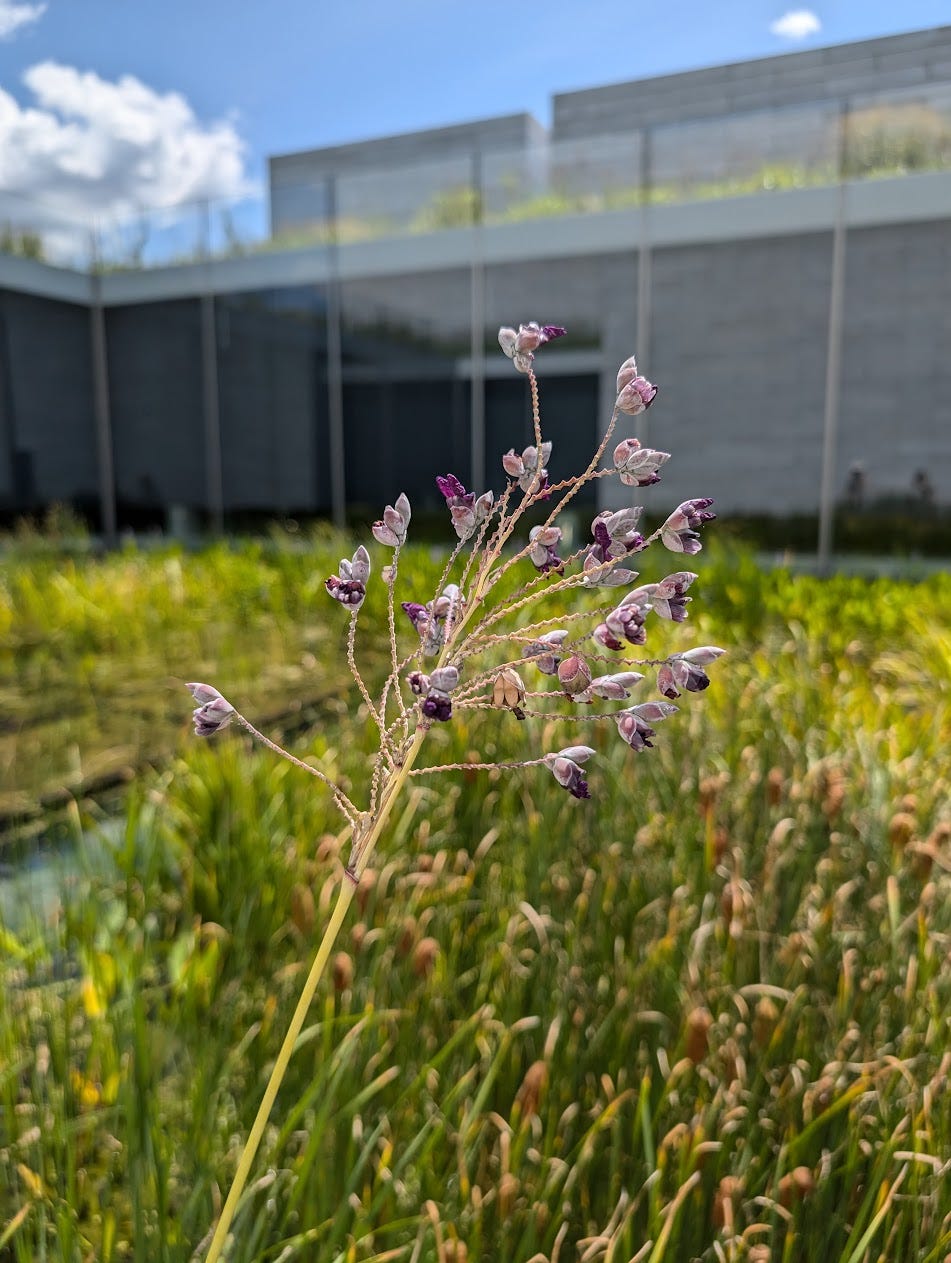What's in Bloom in the Glenstone Water Court - 8.22.2024
Hello fellow associates!
The water court is one of the most iconic features of landscape design at Glenstone, and I know I have been missing watching the successional blooms. Thanks to our very own aquatic horticulturalist, Jon Sander, I have a peek into what's currently in bloom in the water court. For any newer associates that may not be as familiar with the water court, it is comprised of a series of "bins" separated by concrete walls. Each section is filled with gravel to a height that corresponds with the growing patterns of different kinds of aquatic vegetation. The final effect combines the wildness of nature with the clean minimalist lines of the Pavilions architecture.
The water court has two different varietals of pale-yellow lilies: Charlene Strawn and Texas Dawn. Charlene Strawn was hybridized by Dr. Kirk Strawn, who had a background in biology and fish hatchery research. This varietal was named for his wife, Charlene, who started growing water lilies in whiskey barrel water gardens at their home in Fayetteville, Arkansas. Kirk quickly became invested in this hobby as well and began trying to develop a complete collection of water lily species. Texas Dawn (pictured below) was hybridized by Ken Landon.
One of the tallest and most striking plants in the water court is Thalia dealbata, or Hardy Canna. The genus Johannes Thal, who is known as the "father of floristry" for his efforts to create regional flora manuals, while the species name "dealbata" means powdery. In addition to being attractive, Hardy Canna goes through a process called Phytoremediation, which removes excess pollutants from the environment.
Red Stemmed Sagittaria (Sagittaria lancifolia var. Rubrum) is a newer addition to the Water Court and provides a visual counterpoint to Thalia as it flowers at a similar height. Although the stem looks green in the photo, there is a red streak along the base of the foliage. It is in the Alismataceae family which contains 112 other species of freshwater plants, and generally feature a similarly structured flower.
After the iris, which are sadly done blooming, Pickerel Rush is probably the showiest plant in the Water Court. Stands of Pontederia cordata, feature many purple stalks and just about every bud seems to be in bloom at the moment! Although Pickerel Rush and Thalia might seem similar given the similar hues of their blooms, Thalia is much Taller and has deeper-colored blooms and Pickerel Rush is shorter and the blooms are structured closer together (although a Pickerel Rush by any other name should still smell as sweet).
If you took the flowers of Red-Stemmed Sagittaria and shrunk them down, you would have the blooms of the Southern Water Plantain. The Alismataceae family is commonly referred to as the Water-Plantain family, so this similarity makes sense. Despite the name, these gracefully branched plants do not produce tiny banana-shaped fruit. Instead, the name comes from the tubers, which are edible to humans when cooked and enjoyed by many a waterfowl.
Last, but not least, is the common horsetail. Similar to the Southern Water Plantain, and Red-Stemmed Sagittaria, this is a newer addition to the water court. It is not, however, a new plant varietal. Horsetails can be considered "living fossils," because their structure has not changed aboutt 350 million years. This structure has worked particularly well, so well that it is considered an invasive species in New Zealand. Each stalk is segmented and high in silica which gives Equisetum arvense a particular springiness. Although the brush-like feature at the top of this stalk looks like a flower it is technically a "fruiting head," because Horsetail reproduces through spores like ferns, which are in the same family. There is a long history of ethnobotanical, and particularly medicinal, associations with this plant.
Florally yours,
Elizabeth Shaw








